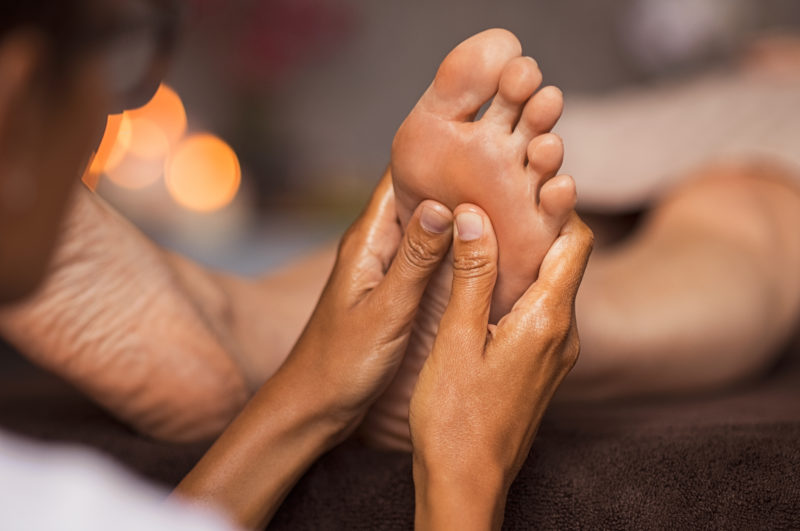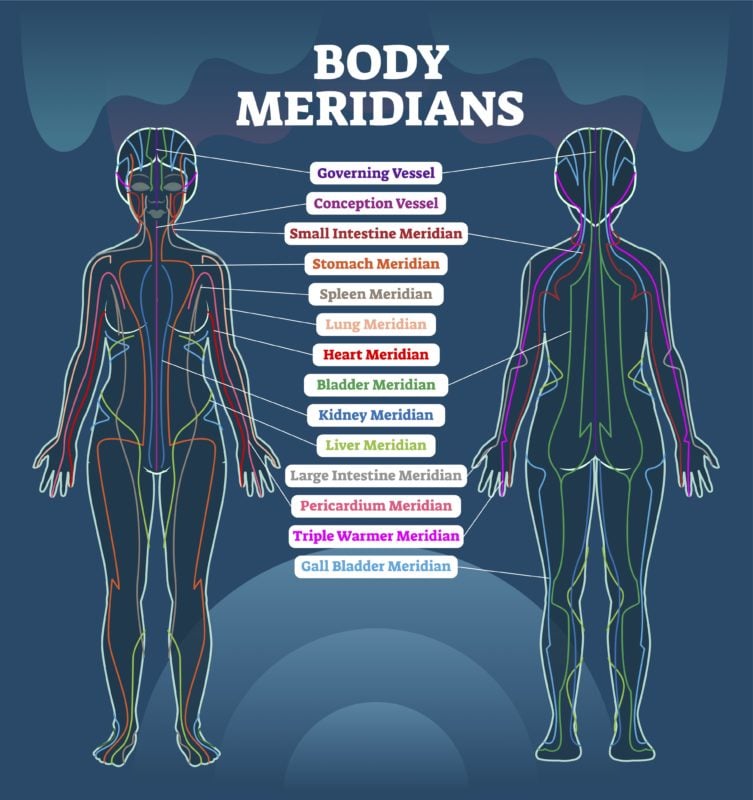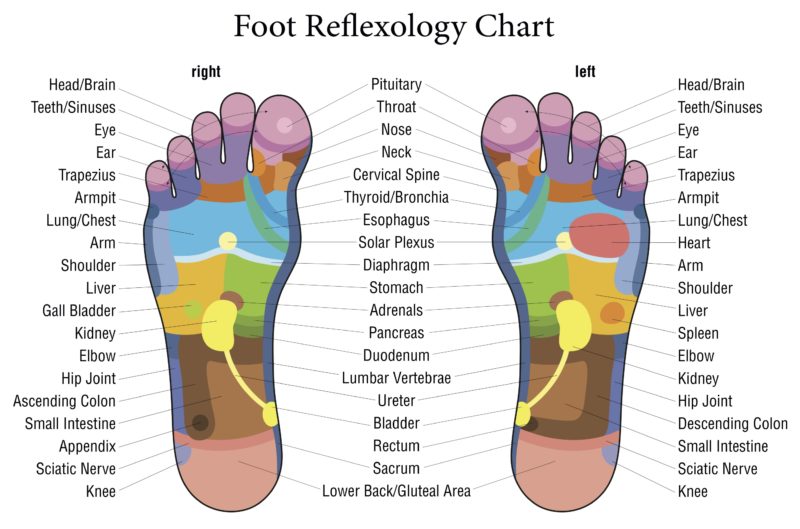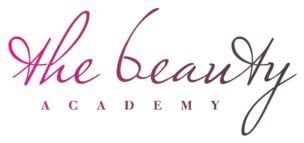All about Reflexology
Updated 8th April 2025

Derived from Eastern medicine practices, Holistic treatments are non-invasive therapies which aim to treat underlying issues. They work on creating harmony within in the body through connection with energy points or meridian lines to work on overall health and well being. They compliment the western approach of medicine by offering an additional method for relaxation and stress relief which can benefit a variety of clients. One of the most popular Holistic treatments is Reflexology. In today’s blog we’re going to put a spotlight on this ancient treatment giving you and insights into the benefits and practices.
What is Reflexology and how does it work?
Reflexology is an In-depth foot treatment designed to relieve stress, relax and rebalance the body. The treatment focusses on reflex areas on foot which correspond to all of the glands, organs and parts of body. Pressure is applied using thumbs/fingers to reflex points on feet to stimulate these specific parts of the body encouraging a balance affect.
Reflexology uses zone therapy which was developed by Dr William Fitzgerald. Dr Fitzgerald believed the body could be divided into longitudinal zones running from the top of the head to the tips of the toes, he found that those parts of the body in each zone are linked by a flow of energy and that the parts of the body in each zone can have an effect on each other.

The body systems are represented on the feet a good way to learn this areas is to see the two feet together as a mirror for the body. For example, the brain reflex is found on the top of the big toe, the spine runs from the big toe down to the heel on each foot. The right foot governs right-hand side of body, left foot governs left-hand side of the body. The image below details the organs and where they are found.

What are the benefits of Reflexology?
- Stress relief – stress is responsible for 75-85% of illness
- Improves circulation – body relaxes during reflexology – tension that restrictsblood flow is reduced enabling the blood to flow more freely
- Helps eliminate toxins from the body (improves the function of the lymphaticsystem and stimulates the excretory system)
- Balancing – improves the balance between the systems of the body so boostingthe immune system.
What is the role of the Reflexologist?
Reflexologists should never medically diagnose during a session with a client, the treatment is merely to focus on rebalancing the body and its systems. This is done by providing a relaxing treatment using pressure with fingers and thumbs to the reflex points not he client’s feet in order to stimulate various parts of the body. Reflexology is best completed In a series of treatments, most clients start to notice a difference after 3-6 weekly treatments. In general it’s recommended that a client have 4-6 treatments in a course.
How much can I charge for Reflexology?
How much you can charge for a reflexology can vary depending on where you are practicing. On average in the UK the treatment can currently cost between £25-£60 a session. It’s worth doing your market research to see what other practitioners are charging in your local area.
How do I become a Reflexologist?
Our two day intensive Reflexology course will provide you will all of the information, techniques and hands on practice you need to get started with your Reflexology. Over the two days you will learn:
- Health, safety & hygiene
- Consultation techniques
- Contraindications
- Theory of reflexology
- Reflexology massage movements and modifications
- Treatment procedure for working on the feet
- Massage mediums
- Practical tuition on performing a reflexology treatment on the feet
- Aftercare advice
Learn Reflexology skills with our Accredited Classroom or Online Course. Book your place securely online:
Online Reflexology Training Course
Certificate
Online
£99.00
Reflexology Training Course
Diploma
2 days
£349.00











